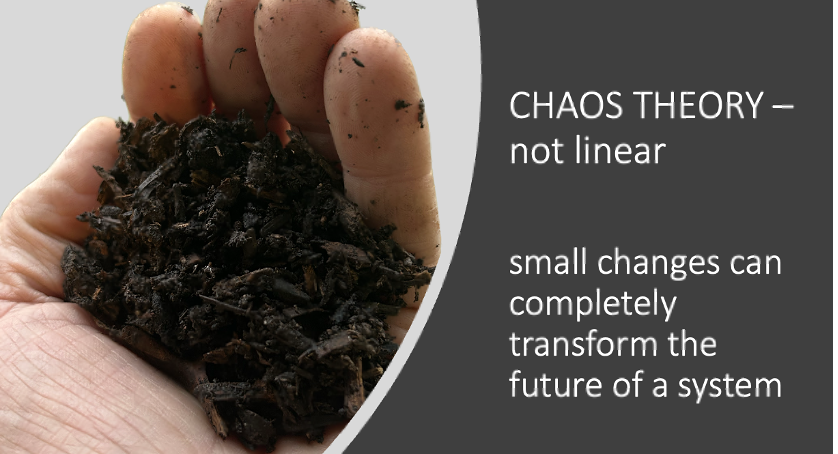Bio hack Your Autumn: Compost, Biology & Liquid Catch Crops After the Drought
- Tim Ashley
- Aug 4
- 4 min read
Updated: Aug 7
It’s been one of the hottest and driest summers we’ve seen in years. Crops came off early, yields are down, and in many fields, there’s likely a fair bit of nitrogen left unused in the soil. In an ideal world, we’d now be drilling a quick-growing catch crop to capture that nitrogen, put some fresh carbon into the system, and give soil biology something to work with before the winter.
But for a whole range of reasons — time, machinery, weather, cost — I know that won’t be possible for everyone.
So, if you can’t plant a catch crop, what can you do?

First things first: If you can plant something, do.
Getting green cover established is still the best option — living roots offer biology exactly what it needs: exudates, structure, and active carbon. Even a short-term mix can do a lot of good in just 4–6 weeks.
But if conditions or logistics won’t allow, there is another way to give your soils a nudge in the right direction. We can simulate the presence of a catch crop using biology and biochemistry. And we can do it at low cost, using some of the materials that are already on the farm.
A Gentle Autumn Recovery Strategy
If you’ve made Johnson-Su compost but aren’t sure how or when to use it, this is a great opportunity. If you don’t have compost, there are good alternatives such as Aiva’s Digest — a blend of biology that’s particularly effective at breaking down crop residue and rebuilding microbial activity.
Here’s what I’d suggest as a practical mix to stimulate carbon cycling, support microbial diversity, and get soils biologically active again:
• Fermented Molasses - To mimic root exudates and stimulate bacteria.
• Humic & Fulvic Acids – to stabilise and mobilise nutrients, such as phosphorus
• Fish Hydrolysate + Seaweed Extract – To support fungi and contribute complex carbons and trace elements.
• Johnson-Su Extract or Aiva’s Digest - To reintroduce beneficial microbes, DNA, and enzymatic activity.
• This creates what is essentially a liquid catch crop — a blend that feeds both bacteria and fungi while reinvigorating the soil’s microbial network.

Optional Step: Light Cultivation
A pass with a straw rake or similar tool can help incorporate the liquid into the top layer, stir in surface residues, and stimulate a light weed flush ahead of drilling. That’s not essential, but it can make the biology more effective and set up a cleaner seedbed.
Give the field 2–3 weeks before drilling, if possible, to allow the microbes to respond and the system to settle.
Costs
Depending on what inputs you already have and whether you have compost on-farm, this approach should cost around £20–25/ha. That’s a relatively small outlay for something that can improve nutrient use, support root development, and help the soil bounce back after stress.
Why This Works: The Microbial Side
We’ve learned so much in recent years about the way compost, especially fungal-rich, mature composts like Johnson-Su, can support microbial succession in the soil.
• Horizontal gene transfer allows microbes to adapt rapidly in the rhizosphere
• Fungal networks provide structure and help bacteria move and interact
• Quorum sensing means microbial communities act as a group, not as individuals
• Compost introduces functional diversity, not just biomass
• Induced resistance (ISR) and systemic resistance (SAR) in plants are both enhanced by the presence of beneficial microbes
So, when you apply a compost extract, or a microbial product like Aiva Digest, you’re not just feeding the soil, you’re repopulating it with potential.
The Fu et al. (2025) study showed that sugars drive a fast microbial priming effect, but combining them with lipids — like those found in fish hydrolysate and seaweed — supports a broader, more resilient microbial response. That’s why my autumn blend includes both: a quick-start for bacteria, and a longer-term energy source for fungi and soil structure builders.
In Summary
If you can plant a catch crop, do. It’s the best tool we have to pull nitrogen back into the system and give your soil biology some structure before winter.
But if that’s not possible, don’t walk away from your soils until drilling. A low-cost liquid mix can replicate many of the same biological benefits — without the logistics of planting.
You’ll be supporting microbial recovery, improving nutrient use, and giving your next crop a better platform to start from.
If you’ve got compost and aren’t sure what to do with it, now’s the time to use it.
Want to talk through a specific plan or discuss blends for your system? Feel free to get in touch.
Tim AshleyAshley Agronomy
References & Further Reading
Johnson, D. et al. – The Johnson-Su Bioreactor Composting Method
Demonstrates fungal-dominant compost’s role in improving soil structure, microbial diversity, and long-term fertility.
https://regenerationinternational.org/johnson-su-bioreactor/
Uehling, J. (Oregon State University) – Fungal-bacterial interactions and spatial microbiome architecture
Research into how fungal hyphae act as highways and scaffolds for bacterial transport and gene exchange.
Bassler, B. (Princeton University) – Quorum sensing in bacteria: talking, listening and responding
Foundational work on microbial communication and how population density influences collective microbial behaviour.
Nature Reviews Microbiology, 2005
Ingham, E. – The Soil Food Web Approach
Framework for understanding the roles of bacteria, fungi, protozoa and nematodes in building soil health and supporting plant immunity.
Yang et al. (2021) – Fulvic acids influence phosphorus availability in maize
Found that higher FA levels correlate with increased P availability and uptake.
Agronomy Journal
Barrow, N.J. (2006) – Do humic substances enhance mycorrhizal colonisation and nutrient uptake?
A review examining how humic and fulvic acids influence nutrient cycling, especially micronutrient chelation.
Martins, D. et al. (2014) – Soil microbial community dynamics in relation to organic inputs and tillage
Shows microbial recovery and carbon cycling in response to liquid inputs and reduced tillage.
“Microbial metabolisms determine soil priming effect induced by organic inputs” (Fu et al., 2025)





Comments